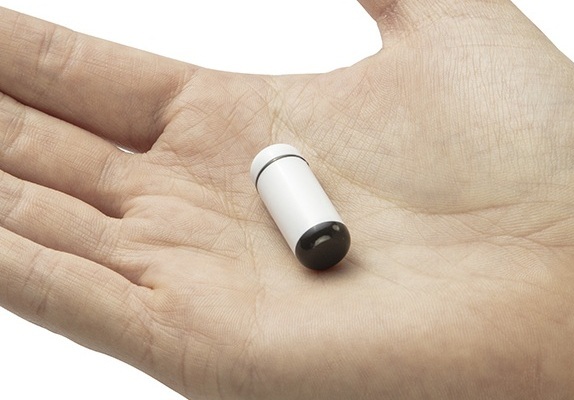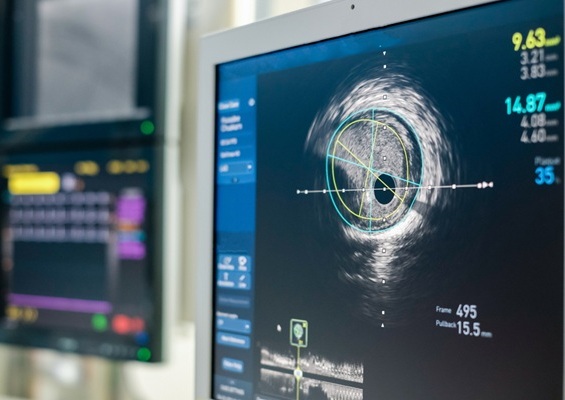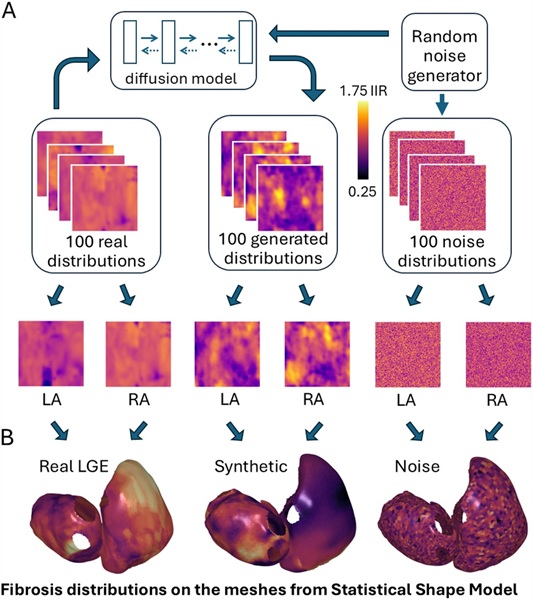RDW Blood Test Can Predict Mortality and Re-Admission Among Elderly, Hospitalized Patients
|
By HospiMedica International staff writers Posted on 25 May 2022 |

Red cell distribution width (RDW), an index for variation of red blood cell size, has been proposed as a potential marker for poorer outcomes in several aging-related diseases and conditions. The biological mechanisms linking greater variability of RBC size and adverse health-related outcomes are not known, however emerging evidence supports the use of RDW as a marker for biologic aging, disease vulnerability, oxidative stress and chronic inflammation. Now, new research has found that higher RDW is associated with increased rates of in-hospital mortality and hospital re-admission among older (>60) patients.
In a retrospective analysis, investigators at Sutter’s California Pacific Medical Center (CPMC, Davis, CA, USA) studied 94,617 patients aged >60 who were hospitalized between January 2013 to December 2017 at Sutter Health. A total of 167,292 admissions were included. The RDW was measured during hospital admission and categorized with 1% intervals. The primary outcome was the rate of in-hospital mortality; secondary outcomes included 30-day re-admission rate and length of hospital stay.
Results showed the overall in-hospital mortality rate was 6.3%. As the RDW value increased, the rate of in-hospital mortality increased from 2.7% for the lowest RDW category to 12.2% in the highest category (p-trend <0.001). The overall 30-day re-admission rate after discharge was 12.5% and the rate of 30-day readmission also increased with increasing RDW categories (7.4% in the lowest group vs. 15.8% in the highest group, p-trend <0.001). Patients with the highest RDW values at admission stayed 1.5–2.0 times longer in the hospital than patients with lower RDW values who were admitted for the same causes.
“Greater variability of red blood cell size is significantly associated with worse prognosis in hospitalized elderly patients, indicating higher mortality, greater risk of early re-admission and longer hospital stay days. Risk stratification strategies for hospitalized elderly should include RDW value,” said Steve Cummings, M.D., lead author of the study, director of the SFCC and a principal investigator at CPMC.
“Predicting the risk of mortality and re-admission are critical for in-patient care. An accurate risk classification strategy for patients can also improve outcomes in clinical practice,” added Warren Browner, M.D., co-author of the study and CEO of CPMC. “However, there are no strong predictors of mortality or early re-admission that can be applied across multiple aging-related diseases. These findings provide the potential of RDW value, one of the most common laboratory tests that are performed for most hospitalized patients, as a biomarker for poorer prognosis or vulnerability in hospitalized elderly patients.”
Related Links:
CPMC
Latest Critical Care News
- Novel Cannula Delivery System Enables Targeted Delivery of Imaging Agents and Drugs
- Ingestible Smart Capsule for Chemical Sensing in the Gut Moves Closer to Market
- Novel Intrabronchial Method Delivers Cell Therapies in Critically Ill Patients on External Lung Support
- Generative AI Technology Detects Heart Disease Earlier Than Conventional Methods
- Wearable Technology Predicts Cardiovascular Risk by Continuously Monitoring Heart Rate Recovery
- Wearable Health Monitoring Device Measures Gases Emitted from and Absorbed by Skin
- Groundbreaking Technology Rapidly Detects Airborne Influenza Viruses
- Handheld Device Could Transform Heart Disease Screening
- Flexible Semi-Autonomous Robot Could Deliver Medicine Inside Body

- Neurorestorative Treatment Strategies Hold Promise for Most Severe Forms of Epilepsy
- Gene Discovery Could Help Grow New Heart Arteries
- Study Discovers Invisible Transmission of Common Hospital-Associated Infection
- Non-Invasive Neuro-Ophthalmology Techniques Could Detect Brain Tumors Earlier
- Mass Manufactured Nanoparticles to Deliver Cancer Drugs Directly to Tumors
- World’s Smallest Pacemaker Fits Inside Syringe Tip

- AI-Powered, Internet-Connected Medical Devices to Revolutionize Healthcare, Finds Study
Channels
Critical Care
view channel
Ingestible Smart Capsule for Chemical Sensing in the Gut Moves Closer to Market
Intestinal gases are associated with several health conditions, including colon cancer, irritable bowel syndrome, and inflammatory bowel disease, and they have the potential to serve as crucial biomarkers... Read moreNovel Cannula Delivery System Enables Targeted Delivery of Imaging Agents and Drugs
Multiphoton microscopy has become an invaluable tool in neuroscience, allowing researchers to observe brain activity in real time with high-resolution imaging. A crucial aspect of many multiphoton microscopy... Read more
Novel Intrabronchial Method Delivers Cell Therapies in Critically Ill Patients on External Lung Support
Until now, administering cell therapies to patients on extracorporeal membrane oxygenation (ECMO)—a life-support system typically used for severe lung failure—has been nearly impossible.... Read moreSurgical Techniques
view channel
Pioneering Sutureless Coronary Bypass Technology to Eliminate Open-Chest Procedures
In patients with coronary artery disease, certain blood vessels may be narrowed or blocked, requiring a stent or a bypass (also known as diversion) to restore blood flow to the heart. Bypass surgeries... Read more
Intravascular Imaging for Guiding Stent Implantation Ensures Safer Stenting Procedures
Patients diagnosed with coronary artery disease, which is caused by plaque accumulation within the arteries leading to chest pain, shortness of breath, and potential heart attacks, frequently undergo percutaneous... Read more
World's First AI Surgical Guidance Platform Allows Surgeons to Measure Success in Real-Time
Surgeons have always faced challenges in measuring their progress toward surgical goals during procedures. Traditionally, obtaining measurements required stepping out of the sterile environment to perform... Read morePatient Care
view channel
Portable Biosensor Platform to Reduce Hospital-Acquired Infections
Approximately 4 million patients in the European Union acquire healthcare-associated infections (HAIs) or nosocomial infections each year, with around 37,000 deaths directly resulting from these infections,... Read moreFirst-Of-Its-Kind Portable Germicidal Light Technology Disinfects High-Touch Clinical Surfaces in Seconds
Reducing healthcare-acquired infections (HAIs) remains a pressing issue within global healthcare systems. In the United States alone, 1.7 million patients contract HAIs annually, leading to approximately... Read more
Surgical Capacity Optimization Solution Helps Hospitals Boost OR Utilization
An innovative solution has the capability to transform surgical capacity utilization by targeting the root cause of surgical block time inefficiencies. Fujitsu Limited’s (Tokyo, Japan) Surgical Capacity... Read more
Game-Changing Innovation in Surgical Instrument Sterilization Significantly Improves OR Throughput
A groundbreaking innovation enables hospitals to significantly improve instrument processing time and throughput in operating rooms (ORs) and sterile processing departments. Turbett Surgical, Inc.... Read moreHealth IT
view channel
Printable Molecule-Selective Nanoparticles Enable Mass Production of Wearable Biosensors
The future of medicine is likely to focus on the personalization of healthcare—understanding exactly what an individual requires and delivering the appropriate combination of nutrients, metabolites, and... Read more
Smartwatches Could Detect Congestive Heart Failure
Diagnosing congestive heart failure (CHF) typically requires expensive and time-consuming imaging techniques like echocardiography, also known as cardiac ultrasound. Previously, detecting CHF by analyzing... Read moreBusiness
view channel
Expanded Collaboration to Transform OR Technology Through AI and Automation
The expansion of an existing collaboration between three leading companies aims to develop artificial intelligence (AI)-driven solutions for smart operating rooms with sophisticated monitoring and automation.... Read more

















